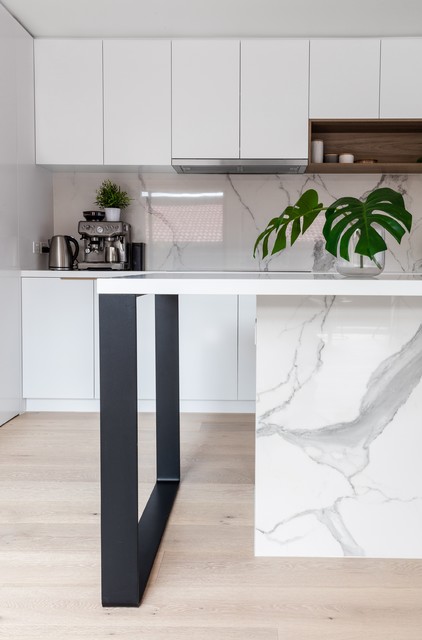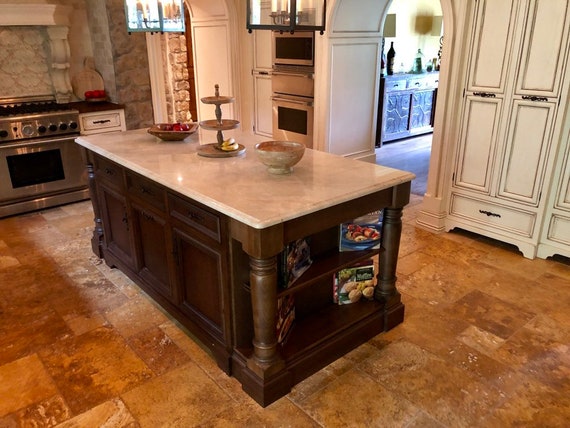Durable Wooden Kitchen Island Legs for Your Home Remodel
Durable Wooden Kitchen Island Legs for Your Home Remodel
Blog Article
Crucial Tips for Selecting the Perfect Table for Your Kitchen
Picking the perfect eating table for your cooking area is more than simply an issue of preference; it requires an extensive understanding of your area and requirements. Begin by measuring your available space to ensure enough clearance for activity. The form of the table plays a pivotal function; while rectangle-shaped tables suit bigger areas, round ones foster intimacy, and extendable choices use flexibility. Product option is equally crucial, with woods giving resilience and glass loaning a modern touch. Ultimately, the table should balance with your cooking area's visual appeals and accommodate your family members easily. What other elements might affect this vital choice?
Action Your Area
Picking the ideal table begins with a careful evaluation of your readily available space. This fundamental action makes certain that the table not only fits easily within the room however additionally complements the total format and functionality of your dining location. Begin by measuring the dimensions of the space, taking into account entrances, windows, and any type of existing furniture. This will certainly help you figure out the optimum allowed dimension for your table.
Consider the circulation of movement around the table. It is necessary to leave sufficient room for chairs to be drawn out and for people to relocate around the table without blockage. A basic guideline of thumb is to allow at the very least 36 inches of clearance from the side of the table to the nearest wall or furniture. This guarantees convenience of access and convenience during meals.
Furthermore, consider the variety of individuals you generally entertain and whether you need additional area for guests. Selecting an extendable table can supply flexibility, enabling you to accommodate varying varieties of diners. By accurately determining your area, you prepared for choosing a dining table that boosts both the appearances and capability of your dining area.
Choose the Right Shape

On the various other hand, round tables are superb for smaller kitchen areas or intimate gatherings, as they promote conversation by enabling every person to deal with each various other. They likewise provide a feeling of comfort and can fit well in tighter spaces as a result of their lack of sharp edges. Oblong tables supply the finest of both worlds, integrating the size of rectangular tables with the affection of rounded ones, making them versatile for various settings.
Square tables are an additional alternative, especially suited for square-shaped spaces. They create a in proportion and contemporary look, cultivating an equivalent eating experience for all seated.
Product Considerations
When selecting an eating table, product factors to consider are extremely important in figuring out the table's sturdiness, maintenance needs, and total visual. Timber is a traditional selection, using timeless allure and robustness. Hardwoods more helpful hints like walnut, mahogany, and oak are especially durable, though they can be expensive. kitchen island legs. Softwoods, such as ache, are more cost effective but might be susceptible to scrapes and dents.
Glass-topped tables give a contemporary, streamlined appearance and can make a room appear bigger due to their transparency. Nonetheless, they call for regular cleaning to stop fingerprints and smudges. In addition, solidified glass is advised for its extra stamina and security.

Lastly, composite materials like MDF (Medium-Density Fiberboard) or plywood are budget-friendly choices. These materials can imitate the appearance of strong timber but may not use the exact same durability. They are normally less complicated to clean but can be prone to water damages otherwise appropriately secured.
Inevitably, the selection of material need to align with your cooking area's style, your way of living needs, and your budget constraints. (kitchen island legs)
Seating Capacity and Convenience
How do you identify the appropriate seating capability and convenience for your dining table? For a family members of 4, a rectangle-shaped table of 48 inches long or a round table with a 48-inch diameter is typically adequate.
The elevation of the table should preferably be around 30 inches, giving a well balanced ergonomic stance for seated diners. Chairs should have a seat height of 18 to 20 inches to make certain a comfortable dining pose.
Design and Looks
Selecting an eating table that matches your style and appearance involves stabilizing individual preference with the existing style of your dining room. The table is often the focal point of the kitchen area, and its layout must match the overall motif of the space. Whether your cooking area flaunts a contemporary, minimalist appearance or a rustic, farmhouse appeal, the table you pick ought to harmonize with these components to develop a cohesive and inviting environment.
Take into consideration products meticulously; wood provides a classic allure and can vary from rich mahogany official statement for a typical appearance to lighter oak for a modern feel. Steel and glass tables, on the other hand, can present a sleek, commercial side to your kitchen area. Do not forget the table's form-- rectangular tables are traditional and flexible, while round and oval alternatives can cultivate an extra intimate dining experience.
Furthermore, pay close focus to details and surfaces. A distressed finish could add character and heat, whereas a glossy surface area can add to a tidy, modern visual. Eventually, your table must not just in shape flawlessly right into your cooking area's layout but likewise show your personal style, boosting the room both functionally and visually.
Verdict
In verdict, choosing the perfect eating table for a cooking area necessitates cautious evaluation of space, shape, product, seating capacity, and visual consistency. Ultimately, a well-chosen dining table promotes an inviting ambience and suits the household comfortably, thus enhancing the dining experience.

When picking a dining table, material factors to consider are critical in establishing the table's resilience, upkeep needs, and overall visual. For a family members of four, a rectangular table of 48 inches long or a round table with a 48-inch size is generally sufficient.
Don't overlook the table's form-- click now rectangular tables are classic and flexible, while round and oblong options can foster a more intimate eating experience. kitchen island legs.
Report this page